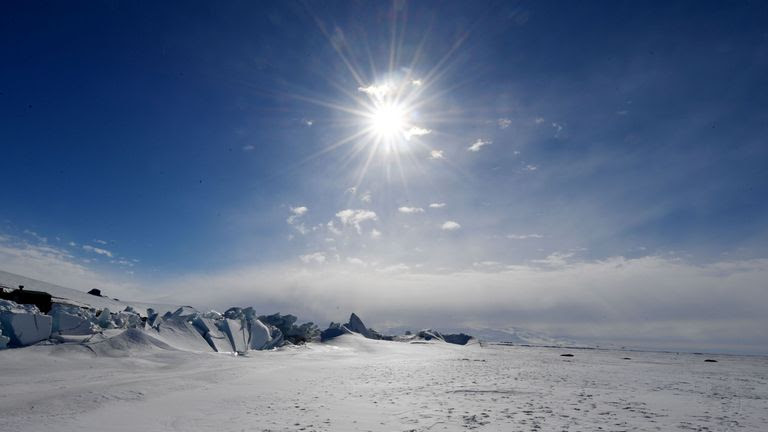On the Pacific Ocean, there have been bizarre events with episodes of intense and persistent abnormally warm conditions, also known as marine heatwaves, which have devastating ecological and economic impacts.
This notable marine heatwave, nicknamed The Blob, began during the winter of 2013/2014. The Northeast Pacific experienced extreme sea surface temperatures (SSTs), which first developed in the central Gulf of Alaska.
These anomalously warm SSTs spread along the U.S. West Coast. This event caused ecological and economic disasters such as geographic shifts in marine species, mass mortalities of mammals and seabirds, unusual whale entanglements and mortalities, and prolonged harmful algal blooms. Being able to predict these extreme events a few seasons in advance is very important, but has proven difficult.
“Marine heatwaves have been shown to have devastating ecological consequences, and some of their impacts could be mitigated if they were skillfully predicted.
This notable marine heatwave, nicknamed The Blob, began during the winter of 2013/2014. The Northeast Pacific experienced extreme sea surface temperatures (SSTs), which first developed in the central Gulf of Alaska.
These anomalously warm SSTs spread along the U.S. West Coast. This event caused ecological and economic disasters such as geographic shifts in marine species, mass mortalities of mammals and seabirds, unusual whale entanglements and mortalities, and prolonged harmful algal blooms. Being able to predict these extreme events a few seasons in advance is very important, but has proven difficult.
“Marine heatwaves have been shown to have devastating ecological consequences, and some of their impacts could be mitigated if they were skillfully predicted.
But this has proven difficult. While the intensity of these events is likely related to local atmospheric forcing, which is difficult to predict at lead times longer than one or two weeks, the likelihood of a marine heatwave occurring can be anticipated a few seasons in advance if we can link these events to large-scale climate conditions,” says Antonietta Capotondi, a physical oceanographer at NOAA’s Physical Sciences Laboratory and lead author of the study.
In a new paper in Geophysical Research Letters, authors A. Capotondi, M. Newman, T. Xu and E. Di Lorenzo use an empirical method to build a model to capture how these climatic conditions may evolve over time and, therefore, whether a marine heatwave can be anticipated.
This study reveals that specific ocean surface conditions appear to drive the development of Northeast Pacific marine heatwaves 6-12 months later, which may offer a source of predictability. These conditions are linked to a unique pattern of sea surface anomalies spanning the North and Central Tropical Pacific, which also links extra-tropical marine heatwaves to subsequent warming of the Central Tropical Pacific.
“Our motivation was to identify those basin-wide conditions that are conducive to the development of marine heatwaves in the northeast Pacific, and we were indeed able to link these events to a dynamic climate model that links variability in the North Pacific to central Pacific El Niño events in the tropics.
In a new paper in Geophysical Research Letters, authors A. Capotondi, M. Newman, T. Xu and E. Di Lorenzo use an empirical method to build a model to capture how these climatic conditions may evolve over time and, therefore, whether a marine heatwave can be anticipated.
This study reveals that specific ocean surface conditions appear to drive the development of Northeast Pacific marine heatwaves 6-12 months later, which may offer a source of predictability. These conditions are linked to a unique pattern of sea surface anomalies spanning the North and Central Tropical Pacific, which also links extra-tropical marine heatwaves to subsequent warming of the Central Tropical Pacific.
“Our motivation was to identify those basin-wide conditions that are conducive to the development of marine heatwaves in the northeast Pacific, and we were indeed able to link these events to a dynamic climate model that links variability in the North Pacific to central Pacific El Niño events in the tropics.
These results open up new areas of research on climate variations that may impact marine extremes, and provide a framework for evaluating the fidelity of climate models in simulating these extremes,” says Capotondi.



Comment here